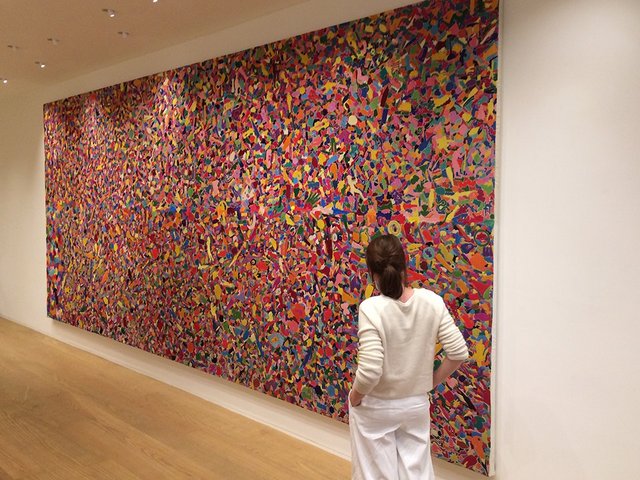The fashionable district of Le Marais in Paris has welcomed a new addition to its growing ecosystem of art galleries. Tornabuoni Art, which specialises in Italian post-war art and has outposts in London, Florence and Crans-Montana, has relocated from its former space on Avenue Matignon, which opened in 2009, to a historic 17th-century mansion in the Passage de Retz. Other galleries in the Marais include Marian Goodman, Galerie Perrotin, Galerie Thaddaeus Ropac, Chantal Crousel and Almine Rech Gallery.
Paris’s art world has seen a number of setbacks in the past few years, from a drop in tourism in the aftermath of terrorist attacks to high tax rates that have spurred many French collectors to do business elsewhere, or even to relocate, but the city still remains a cultural hub, says the director of the gallery, Michele Casamonti. “We continue to receive sophisticated international collectors here, especially Americans, and Paris’s museums and curators have been been very good to us since we opened in 2009. When we found this space it was a case of ‘double or quits’ for us.”
The new 720 sq. m space, complete with double height ceilings and skylights, is a significant upgrade from the previous space and well-suited to the gallery’s increasingly ambitious exhibition programme. It’s opening show of works by the Italian artist Alighiero Boetti is the largest-ever retrospective to be held in a private gallery. “We’re becoming more than just a gallery, working increasingly with museums, institutions and foundations,” Casamonti says.

The show, which has been organised in collaboration with the Archivio Alighiero Boetti in Rome, is the second in a series of three exhibitions dedicated to the artist this year, and brings together three monumental works, Anno 1984 (1984), Mappa (1989-94) and Tutto (1992-94), for the first time. The magnitude and visual impact of these works in this setting is paired with smaller but equally complex pieces that punctuate the artist’s entire career, from one of the first embroideries he ever had made in Afghanistan to his obsessive, research-driven projects, such as a book that he made with his wife, Anne-Marie, that charts the 1,000 longest rivers in the world. It took the couple seven years to complete and is displayed along with a bound volume of faxes and letters that they exchanged with geographical institutions and research centres around the world while they collected data. The book is on loan from the artist’s daughter, Agata Boetti, while prices for the other works range from €20,000 to more than €10m.
The series of three Boetti shows will culminate in Minimum/Maximum, a bigger and non-selling survey at Venice’s Fondazione Cini, which is due to open during the Venice Biennale opening week in May and will include never-before seen works from some of Boetti’s most personal and intimate artistic projects.




